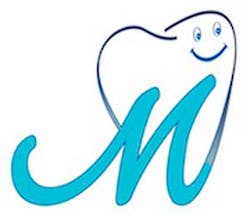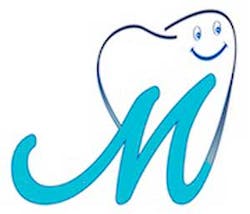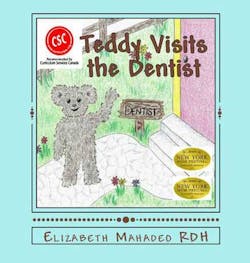Educate your patients before their children’s first dental visit
When your patients tell you they’re pregnant, it’s not too early to discuss their baby’s first visit to the dental office. Begin with their oral health as a new parent, and the importance of an effective daily oral health regimen. Self-care at home should be routine, and regular visits to the dental office for an exam and preventive prophylaxis are imperative to ensure good health for the mother and her developing baby. Just as important, explain the parental role in providing a dental education and positive dental experience for their child.
It is vital that any disease in your patient’s mouth be treated as soon as possible in order to minimize risk to the developing baby. Dental treatment during pregnancy is not only safe but recommended!(1) Leaving problems unresolved or neglecting treatment can potentially cause harm to both mother and developing baby.(2) Routine examinations and preventive prophylaxis are often increased during pregnancy to every three or four months. Maintaining good oral health during pregnancy is very important.
Now is the right time to implement an effective daily oral health care home routine, or to encourage and improve an existing regimen. Not only is it beneficial to a patient’s health and to her baby’s health, but it also lays a healthy foundation for the family’s future. Brushing at least twice a day and interdental cleaning at least once a day creates a healthy habit and a good example for their child. Make individual recommendations for each patient. Good oral hygiene decreases the amount of infection-causing bacteria in their mouth, decreasing their risk of tooth decay, gingivitis, and periodontitis.
When the baby is born, the first dental visit is recommended when the first tooth erupts or by the age of 1, whichever comes first.(3) The American Academy of Pediatric Dentistry’s position statement is, “Your child’s first visit to the dental office should be soon after the eruption of the first primary teeth (typically 6 to 12 months of age) and no later than their first birthday.”(4)
The best thing for an infant or toddler’s first visit is to take them to a board certified pediatric dentist. Pediatric dentists are educated to detect dental problems and anomalies in infants and young children. They assess a child’s growth and development, risk of dental decay, and advise on home care procedures. Yes, your patient should brush their infant’s teeth and wipe their gums. A huge risk for infants and toddlers is early childhood caries (ECC), a potentially destructive condition of extreme tooth decay that can lead to pain and suffering for the child.
According to the first U.S. Surgeon General’s report on oral health published in May of 2000, dental caries, which can cause tooth decay, is the “single most common childhood disease.”(5) It is five times more common than asthma and seven times more common than hay fever. It is also the most prevalent unmet health need among children in developed countries.(4) Untreated tooth decay affects more children than any other chronic infectious disease in the U.S., leading to pain, suffering, and even death.(6) If your patient’s child is in need of restorative work, a good recommendation is the book “Teddy Gets a Filling.”(7) “Teddy Visits the Dentist” describes an appointment at the dental office for a routine checkup and prophylaxis. “Teddy Gets a Filling” describes an appointment at the dental office for a restorative procedure.
Although it can be tempting for parents not to restore their child’s primary teeth for a variety of reasons, it is necessary to take care of these teeth. Primary teeth provide a path for permanent teeth to follow into proper alignment. The health of a primary tooth can affect the health of the permanent teeth developing under the gums. Primary teeth are vital to a child’s speech and overall growth and development. Educate your patients about these facts before they make a decision regarding their child’s oral health. Read “Child Oral Health Part II” by Dr. Sean Childers for more information.(8)
Fortunately tooth decay and ECC are preventable. Daily effective brushing and interdental cleaning, along with regular checkups and preventive prophylaxis, are significant in taking a preventive approach to your patients’ health and therefore the health of their children.(9) Discuss with your patients an effective home-care routine specific to their children’s needs. With an effective daily routine, lowering the amount of plaque in a child’s mouth will decrease the occurrence of tooth decay.
It is essential to educate your patients before their children’s first dental visit. A nice smile is something a child can be proud of. Help your patients make oral health a priority for themselves and their children. Preventive appointments at the dental office, an effective daily oral health home care routine, and restoring teeth when required lays the foundation for children to value their oral health and total body health.
Elizabeth Mahadeo is a Registered Dental Hygienist and author of the "Teddy Visits the Dentist" series. She is the founder of The Mahadeo Movement, which strives to highlight oral health and overall wellness.
* Portions of this post may have originally been posted on themahadeomovement.com, and have been republished here with permission.
References
1. Oral Health during Pregnancy and Early Childhood: Evidence-Based Guidelines for Health Professionals. CDA Foundation, Feb, 2010. http://www.cdafoundation.org/Portals/0/pdfs/poh_guidelines.pdf. Accessed November 29, 2014.
2. Childers S. “Child Oral Health Part III”. The Mahadeo Movement, 24 April, 2013. Accessed November 29, 2014. http://www.themahadeomovement.com/blog/2013/04/24/child-oral-health-part-iii-pregnancy-and-infant-oral-health/.
3. https://www.youtube.com/watch?v=EUqxmK5CcZE.
4. Childers S. “Child Oral Health Part I- Guest Post with Dr. Sean Childers”. The Mahadeo Movement, 6 March 2013. Accessed November 29, 2014. http://www.themahadeomovement.com/blog/2013/03/06/child-oral-health-part-i-guest-post-with-dr-sean-childers/.
5. US Department of Health and Human Services. Oral Health in America: A Report of the Surgeon General-- Executive Summary. Rockville, MD: US Department of Health and Human Services, National Institute of Dental and Craniofacial Research, National Institutes of Health, 2000.
6. Silverman J, Douglass J, and Graham L. American Academy of Pediatric Dentistry, Pediatric Oral Health Research & Policy Center. The Use of Case Management to Improve Dental Health in High Risk Populations. June 2013. http://www.aapd.org/assets/1/7/POHRPC-TR3-2013-Final.1.pdf. Accessed November 29, 2014.
7. http://www.themahadeomovement.com/books. Accessed November 29, 2014).
8. Mahadeo E. Child Oral Health Part II- Guest Post With Dr. Sean Childers. April 2013. http://www.themahadeomovement.com/blog/2013/04/10/child-oral-health-part-ii/. Accessed November 29, 2014.
9. http://www.themahadeomovement.com/videos. Accessed November 29, 2014./




